#associated with death in Japanese/Chinese cultures.
Explore tagged Tumblr posts
Text
my other thing I like about DECT is that it’s a very friendly introduction to metafiction literature that isn’t just smarmy fourth wall breaking but also isn’t so intensely layered like house of leaves that someone completely unfamiliar with the concept couldn’t get it
#there’s a lot to love about the structure of DECT and how it plays into a shit ton of concepts. like the illusion of self-awareness by#fictional characters along with the four act structure. Which to me feels like an ode to death given four is#associated with death in Japanese/Chinese cultures.#like with all metafiction DECT gives off the illusion it is aware of the cruelty and tragedy of V2’s fate. But at the same time you can also#tell there is an intense sadness communicated by the author’s intention in unraveling this abrupt truth#which I think is…personally one of the greatest strengths of metafiction. you no longer see into the heads of just the characters#but the one who actually gave you illusion they were alive#DECT#dreams end come true#ultrakill#personal post#v2#mirage ultrakill#mirage
39 notes
·
View notes
Note
all I can think of after watching Blade's trailer is that he's yet another version of Kny's Muzan
Beloved I’m going to need u to elaborate on this one bc it’s befuddled me LMFAOOOOO
#ask.🌧#anon#like the spider lily thing I do see#but that’s a v common symbol associated w death in both Chinese and Japanese cultures#and other than that I don’t find their personalities or stories very similar#but admittedly I don’t know much abt Muzan he doesn’t interest me v much!!!#so I’m curious id like to hear an explanation
4 notes
·
View notes
Text
My OCs' jersey number explanations ramblings ^_^
Tsubasa - #13 (usual jersey)
Tsubasa's birthday is February 13. So purely in terms of personality, Tsubasa is egocentric and self-absorbed enough to use his birth date as his preferred jersey that he insists on wearing
Now onto the meta stuff:
Well we all know 13 is the cliched bad luck number in Western culture. Tsubasa in his backstory has many unlucky circumstances surrounding his life. Btw I know Gesner is #13 in BM but let's be honest Tsubasa is more important (my beloved oshi). I think it can also have a double meaning, unlucky number 13 as in you're unlucky to be against him rather than the sole fact that he, himself, is unlucky.
Tsubasa is a self-reliant person & player who always preserves so it can be a case of someone "making their own luck" no matter the circumstance as well.
He has a lot of strange beliefs and conventions so being symbolized by a superstitious number also fits him thematically. For example he believes in angels and the death-rebirth cycle and other such not scientifically proven to exist things.
Tsubasa's character has a theme surrounding an obsession with "death" both literal and symbolic (as his goal of self-realization and also his definition of "change" lies in "death" in his own mind, hence the obsession with "dying", and to him "death" is "repentance" for what he "has done", which according to him is "being born").
The death-rebirth cycle samsara is a Buddhist belief. In Japanese beliefs about Buddhist deities, there are thirteen Buddhas who also play an important role in traditional funerals (once again bringing it back to the theme of death and rebirth in his own personal belief system + as well as the fact that he veers spiritual).
The number 13 itself in astrology and tarot readings is sometimes associated with transformation and rebirth, and the End of one cycle onto the beginning of another. The "Death" card is number 13 in the major arcana - the card itself also symbolizes renewal.
In Japanese & Chinese numerology: 1 + 3 = 4, "shi" = death, traditonally four is considered unlucky in Japanese culture even if 13 itself isn't.
#42 - U-20 match jersey specifically
4 + 2 = "shini" = "to death", again considered an unlucky number, in Tsubasa's case more so means "I'll play to death", i.e. "I'll play until I'm renewed". It's also pretty edgy and contrarian all things considered since a superstitious Japanese person would usually avoid having this as a jersey number.
Mael - #5
Mael's jersey number as well as most things about him are meant to be ironic in some way/bully him.
In Japanese numerology, it's considered a lucky number. It's also associated with the Chinese concept of the "five elements"/Wuxing, so it is said sometimes that number 5 brings luck and blessings, which Mael lacks from birth.
The deficient destructive cycle in Wuxing is the fifth phase "counteracting" (fire evaporates water, water destabilizes earth, etc) -> Mael has a reactive and explosive personality that is harmful to him and others lying within his trigger prone behavior.
In Christian numerology, number 5 symbolizes grace and God's unwavering love towards humankind, which is again ironic because Mael is born in an unfavorable situation and struggles to move on.
God's fifth commandment is "Honor your mother and your father" -> Mael was born into an abusive household to drug addicts who neglected him and later on disowned him. Since birth they gave him nothing and were nobodies to him. Number 5 symbolizes God's favor culturally, but Mael was not born in his favor, and afterwards he fails to adjust to a normal and stable self and living.
In Buddhism there are also five precepts that serve as the base morality principle for enlightenment and the path so salvation.
The five precepts forbid the following: killing of both animals and humans, theft and other things along those lines (fraud, forgery), sexual misconduct (i.e. sexual acts which are either forceful, unethical or adulterous in nature), spoken falsehood (lying, gossiping, verbal aggression), intoxication (alcohol, drugs, occasionally smoking is counted).
Out of those Mael is guilty - and often! - of theft, verbal aggression/malicious speech, intoxication (both as someone who uses stimulants and drinks frequently and even sold substances in the past).
TL;DR MAEL IS NOT MAKING IT TO NIRVANA WITH THIS ONE 😂😂😂 HE IS STUCK IN THE CYCLE 😂😂😂😂
36 notes
·
View notes
Note
are there certain visual themes or imagery you yourself particularly associate with yao as an artist or writer? i'm trying to visualize the nations better...
hmmm, interesting question. i like incorporating nature imagery into the hetalias, especially old nations like yao. there's something mythical and compelling about the sense of age and vastness that evokes. these are some (non-exhaustive) thoughts i've had:
a. i always associate yao with rivers and water; the Yellow River in particular, which is often seen as the "cradle" of Chinese civilisation (but of course, there's also the Yangtze, and the Pearl River too). rivers are life-giving but also untameable, powerful and dangerous—the Yellow River's fertile silt birthed agriculture and civilisation, but its destructive floods have claimed uncounted lives over the millennia of Chinese history. and...that's kind of how yao is, as a nation and an empire, towards others of their kind. the source of cultural and artistic innovations, but also death. water can be fluid, life-giving and nurturing, but also as treacherous as a torrential flood sweeping everything away, no?
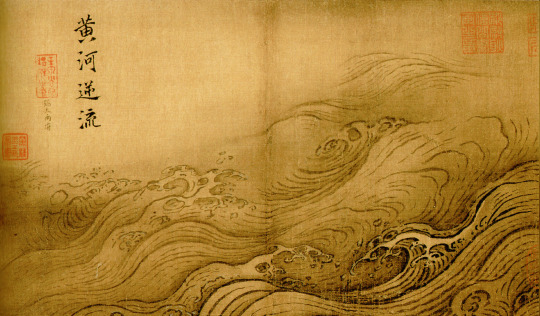
like the Yellow River's relationship with humanity, yao's impact on world history feels to me like this duality of life and death; peace and warfare; mentor, empire, conqueror... it's like, yao's been a teacher to many others but...i don't think their predominant image of him is as a warm and nurturing figure. maybe more so with his own people, but less so with other nations. being the old warlord he is, he'd say certain things very matter-of-factly (especially to yong-soo and kiku), about how power is the only language their kind universally understands, or about history being written by the victors (when we consider how the only surviving written sources about certain periods of asian history are only chinese ones...), inasmuch he'd talk about the importance of confucian virtue, integrity and humility on other occasions.
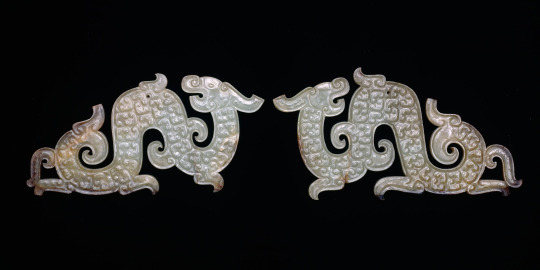
b. for obvious reasons; dragons—they and rivers both have that overlapping association of being serpentine, powerful and untameable. in contrast to how european dragons often took on villainous roles and were harbingers of disaster, it's important to note chinese dragons usually have far more positive cultural connotations. they symbolise prosperity, fortune and are guardians; often associated with power over water (so again; Yao and rivers and water.) many dragons are associated with a particular river or sea. they're also believed to have powers over the weather and were often prayed to. after all, the capriciousness of the rains ruled people's lives so much through natural disasters or made a difference between a bountiful harvest and a famine. so, i think at various points in history his people might also have understood him as a literal dragon (spirit/deity) walking around in a human guise. dragons are also a visual staple of chinese culture, from statues to jewellery. at the same time: while they're auspicious symbols—dragons can of course have aggressive and far less benign connotations if we consider how they became symbols of the emperor—and thus chinese imperial power and dominion over others. he evokes majesty, but also dread from that perspective.
c. plum blossoms: much like the sakura in japanese culture, plum blossoms are one beloved motif you'll see showing up in chinese art and literature throughout history. they're elegant and ethereal, also a symbol of both transience and renewal in a way, i'd say—their blossoms wither and die, but they come back each year. there's also that saying about how without a bitter cold, you won't have the sweet fragrance of plum blossoms, because they start blooming in winter. that's...very yao to me. china, as an idea, makes me think of a lot of elegant and refined traditional culture (like poetry or paintings) which plum blossoms recall—but i also think of humbler themes—the simpler idea of someone and something who is enduring, adaptable and resilient. who endures the harshest weather time and time again until spring arrives, the way my (peasant) ancestors probably did, carving their way through all the hardships of chinese history. yao might appear refined in an indulgent, wealthy way when he's dressed in his finest silk hanfu or a smart western suit in the modern day—but if you shake his hand, his palms are always callused and you can just see the weight (and hard-won experience) of centuries in his gaze.

114 notes
·
View notes
Note
You've said before that you like(d) The Pillow Book, right? I'm really interested in watching it but I want to at least go in prepared if it turns out to be, uh, as orientalist as the first paragraph on Wikipedia makes me fear that it might be.
Do you or your followers have any words of warning? I feel like I need a DoesTheDogDie but for racism.
--
I haven't rewatched in a few years, but I don't think it's too bad. What on earth is in that para... oh... dear.
The Pillow Book is a 1996 erotic drama film written and directed by Peter Greenaway, which stars Vivian Wu as Nagiko, a Japanese model in search of pleasure and new cultural experience from various lovers. The film is a melding of dark modern drama with idealised Chinese and Japanese cultural themes and settings, and centres on body painting.
Ahaha. Okay, that is more or less accurate, but I don't think it gives the right impression at all. Nagiko is a model during part of the plot, but I'd honestly forgotten because of everything else going on in the movie.
The plot follows her from birth through her epic revenge on the man who blackmailed her father into sex and ruined his life.
Said man was her father's publisher, so she lures him in with her calligraphy and poems written on the bodies of a bunch of different naked dudes. She's inspired by her namesake, Sei Shonagon, the author of the original pillow book. I guess she's pursuing pleasure, but it's very much some weird imitation of Sei Shonagon, not "Ooh, Asian lady do sexy things".
There are montages of book binding and song lyrics scrolling across Vivian Wu and Ewan McGregor fucking in a bathtub with random split screens that were really cool in the 90s (but kind of look like cheesy screensavers now).
The "idealised" thing is probably referring to how the fashion show she walks in takes place in an ancient temple associated with Sei Shonagon and everyone is obsessed with calligraphy skills. There are all these visually gorgeous parts that talk about ancient literature and whatnot. It's the usual Greenaway crazy visuals.
It's a batshit art film. I'd probably warn more for death and corpse desecration than for orientalism, but YMMV.
30 notes
·
View notes
Text
I'd say I'm becoming a nerd, but that ship sailed a long time ago. I guess I'm just expanding my nerdiness to other areas.
Anyway, MORE MYTHOLOGY!
So in Journey to the West, the Buddha explains that there are 4 'spiritual primates' that don't fit into any categories for immortals or types of creatures. Fans of Lego Monkie Kid are likely familiar with 2, the Stone Monkey Sun Wukong and the Six Eared Macaque. The other 2, the Long-armed Gibbon and the Red-Buttocked Baboon are a lot more obscure. They only get a brief mention in JttW because the focus of the chapter they appear in is Macaque, but the idea of a set of super powerful Immortal monkeys is just too fun to pass up, you know? So I've been thunking my thinker.
What if each primate was associated with a different realm (mortal, heavenly, lunar, and underworld) and element? I know the 4 elements (earth, water, wind, fire) are a western idea rooted in alchemy and eastern mythology has 5 elements (earth, water, fire, metal, wood), but there aren't 5 monkeys and this is just a thought experiment and not me trying to force western ideas onto eastern culture.
Got it? Good.
Now, Sun Wukong is very solidly earth because he's, you know, a rock. No surprise there. He was also born in the mortal realm and spent most of his life there, so we'll call him the celestial primate of the mortal realm while we're at it.
The Six-Eared Macaque is another easy one. A lot of LMK fannon associates him with wind, inferring that his heightened hearing has something to do with wind magic. He's also very closely tied to the moon because of the line in "Shadow Play" where he directly compares the Warrior (himself) to the moon. So Macaque is the celestial primate of wind and the Lunar realm.
Now here's where we get a bit more speculative and start using information creatively. There are 2 monkeys, realms, and elements left I want to use, so let's start with the monkeys so everyone has a baseline understanding.
The Long Armed Gibbon (Gibs, from now on) is described as being able to "seize the sun and moon, shorten a thousand mountains, distinguish auspicious from inauspicious, and manipulate planets and stars."
The Red Buttocked Baboon (Babs for short) has "knowledge of yin and yang, understands human affairs, is adept I'd daily life and can avoid death and lengthen its life."
Starting with the realms because they seem easiest to assign, I would give Gibs the Heavenly realm because of its ability to move around celestial objects like the sun, moon, planets, and stars. This leaves the Underworld to Babs, which I think fits nicely because their "knowledge of yin and yang" and "understand[ing] of human affairs" would make them a good assistant to the 10 Kings of the Underworld.
Next comes the 2 remaining elements, water and fire, which are a bit tricky because it could go both ways.
Gibs could be fire because the sun and stars are giant balls of burning plasma, but also water because the sky/heavens are often associated with an ocean or other bodies of water in several different mythologies. For example, in Egyptian mythology, Ra sailed his boat through the sky every day, while in early Abrahamic belief the sky was a huge dome with water on the other side, and rain happened when floodgates were opened to let the water through. In Chinese myth specifically, the Milky Way is often depicted as a river that is sailed through by various deities.
Babs could fit with fire as well because underworlds and hell-adjacent places are often shown to have fires to torment and punish the sinful dead, no surprise there. But there is surprisingly a lot of water symbolism in the realm of the dead as well. For example, some people may be familiar with the Japanese idea of the Sanzu River, very similar in concept to the Greek River Styx, as well as the Chinese Huang Quan/Yellow springs.
Personally I would pair Babs with fire because he has red in his name, making him the celestial primate of fire and the Underworld.
That leaves Gibs to be the celestial primate of water and the Heavenly realm.
I feel pretty good about this, but if anyone else has other ideas I'd love to hear them.
Sh*tpost Masterlist
#lego monkie kid#lmk#sun wukong#journey to the west#liu er mihou#six eared macaque#jttw#long armed gibbon#red buttocked baboon#crack theory#my theory#chinese religion#chinese mythology#4 elements#cool connection#no books this time we die like men#i've put more effort into this than i have most of my school or college research papers#maybe i should've been a mythology major...#shadowpeach#mythology sh*tposting#mythology#mythology and folklore#jttw inspo character ideas
112 notes
·
View notes
Text
Pokémon Character Etymology Comparison
Most of the time, the translators of the Pokémon games will a choose a name with a similar meaning to the Japanese one; for example, Takeshi comes from ishi, "stone," so he got the English name Brock. But sometimes they give characters random names that have nothing to do with their originals.
Because I'm a nerd, I compiled a collection of examples of this across the main series games, with the meanings for both the Japanese and English names listed. This is gonna be a long post; buckle up, folks.
Kanto
Guriin / Blue
Japanese Meaning: green
English meaning: blue. We’ve all heard of this one, but I couldn’t not include it.
Ayumi / Elaine
Japanese meaning: step or progress
English meaning: a lane. Possibly also chosen because it starts with E, as in Eevee? Sigh.
Shin / Trace
Japanese meaning: advance. Fits with the protags, Ayumi and Kakeru (to dash).
English meaning: uh…the protagonist is tracing his movements? He’s just a trace of what Blue was in the original games? It rhymes with Chase??? Who knows.
Dr. Yukinari Ohkido / Professor Samuel Oak
Japanese meaning: “ohkido” is a transliteration of orchid. Yukinari is similar to the given name of Unshou Ishizuka, the voice actor for Prof. Oak in the Japanese version of the anime; it’s unknown if that is related.
English meaning: So many questions. Why was he downgraded to a professor instead of a doctor? Why Oak instead of orchid, just ‘cause Oak sounds like more of an old man name? Samuel is similar to Salem Oak, a historic tree in New Jersey. Which is still a super random connection.
Nanami / Daisy
Japanese meaning: reference to a type of holly tree. Ironically is part of the Ilex genus, even though that forest is in a different region.
English meaning: the flower, duh. In Western cultures usually represents friendship and innocence.
Masaki Sonezaki / Bill
Japanese meaning: First of all, yes, Bill kind of has a last name in Japanese. It has never appeared in the games, but was included in the Pocket Monsters Zukan, a supplementary material to Red & Green that is considered somewhat canon. Masaki comes from a type of shrub native to Asian countries, and Sonezaki is named after a region in Osaka, the city that that Bill’s hometown Goldenrod is based on.
English meaning: believed to be a reference to Bill Gates. Because computer man
Matisu / Lt. Surge
Japanese meaning: Seemingly a reference to Clematis, a genus of flower. I can’t find anything symbolically important about this flower that would apply to him.
English meaning: y’know, an electric surge. Could also come from “Sarge.” And they may have given him the specific rank of lieutenant because when abbreviated it kinda looks like lightning?
Kyou & Anzu / Koga & Janine
Japanese meaning: Doing these two together because their names correlate in Japanese. Both words are different ways of saying apricot.
English meaning: Koga-ryuu is a school of ninjutsu, and Janine is ninja with the syllables reversed.
Natsume / Sabrina
Japanese meaning: named after the Chinese jujube tree; big religious symbol in Islam, where it is rumored to be the Tree of Knowledge, and Buddhism through association with Vishnu.
English meaning: Psychic, brain, and possibly a reference to Sabrina the Teenage Witch.
Kanna / Lorelei
Japanese meaning: contains the word for “cold”; full name comes from the Canna lily, which ironically must be moved to a warm location during winter.
English meaning: supposedly after a famous maritime disaster site in Germany, which means “murmuring rock.” We went from flowers to death and destruction so fast
Wataru / Lance
Japanese meaning: cotton; and also a reference to a Japanese dragon-water-god.
English meaning: ok bulbapedia’s stretch here is that lances were used in medieval legends to fight dragons. But that’s stupid. They just chose a cool name
Johto
Dr. Utsugi / Professor Elm
Japanese meaning: from a Japanese shrub in the hydrangea family.
English meaning: the elm tree, continuing the trend of the Japanese doctors being named after shrubs & getting localized into tree professors.
Akane / Whitney
Japanese meaning: the madder plants, which are associated with the color red because of the dye they produce.
English meaning: white (or possibly whiny). Dunno how she became associated with an entirely different color.
Shijima / Chuck
Japanese meaning: several options here. There’s a cultivar of the haworthia genus, the word silence, or a term meaning four islands.
English meaning: to throw. Possibly a Chuck Norris reference as well.
Mikan / Jasmine
Japanese meaning: citrus fruit, specifically oranges.
English meaning: name of a plant; likely chosen as a pun on “mine” or “mineral.”
Yanagi / Pryce
Japanese meaning: willow. Often seem as a solemn tree; notably only grows in colder or temperate locations.
English meaning: it’s an ice pun haha
Ibuki / Clair
Japanese meaning: Chinese juniper plant, popular in Japan for its use in bonsai art. Also “breath,” a pun on Dragon Breath.
English meaning: Lair. As in a place that dragons live. Wooooo
Itsuki / Will
Japanese meaning: Zelkova tree, popular once again in bonsai and also for furniture and drum making.
English meaning: willpower.
Hoenn
Mitsuru / Wally
Japanese meaning: to be frail; also influence from “vine” and “crane,” possibly referencing the practice of giving origami cranes to those who are ill.
English meaning: supposedly from “wallflower.” I think it’s weird to focus on the social effects of his condition when the Japanese name is so focused on the physical aspects of it but whatevs.
Old Man Hagi / Mr. Briney
Japanese meaning: the Japanese clover plant.
English meaning: brine, salt water.
Mari & Dai / Gabby & Ty
Japanese meaning: mari is “ball;” Bulbapedia posits this might refer to the end of a microphone, but I’m not convinced. And dai is a topic of an interview.
English meaning: from the verb “to gab,” and…possibly a reference to TV?
Mayumi / Lanette
Japanese meaning: from a type of spindle plant. It’s in the same genus as the plants Bill and Celio are named after.
English meaning: from LAN (local area network) and net, as in internet.
Azusa / Brigette
Japanese meaning: another spindle plant.
English meaning: bridge, a device to connect several networks, like how Pokémon Box connects to RSE. And then the same suffix as Lanette.
Director Kusunoki / Captain Stern
Japanese meaning: camphor tree
English meaning: the stern of a boat. No idea why his title was changed.
Higana & Shigana / Zinnia & Aster
Japanese meaning: Higana refers to the red spider lily, a plant commonly associated with death and the afterlife. Shigana, literally translated as “this shore,” refers to the mortal world, with higana (“other shore”) referring to the afterlife.
English meaning: Both flowers. Zinnia is usually associated with remembering an absent or distant, but not necessarily dead, friend. Kind of a watered-down version of the Japanese name. Aster is named after a Latin word for star, and is usually associated with faith and wisdom.
Tsutsuji / Roxanne
Japanese meaning: the rhododendron species of flowers.
English meaning: you guessed it, rocks.
Tessen / Wattson
Japanese meaning: passion flower clematis, the same genus referenced in Lt. Surge’s name.
English meaning: you guessed it, watts
Asuna / Flannery
Japanese meaning: from asunaro, a type of cypress tree. Ironically would not be a good tree for Lavaridge Town, as it is not drought-resistant.
English meaning: flames or something? I’m not convinced this is a real name
Senri / Norman
Japanese meaning: senryou, an herb often used for Japanese New Year decorations; also 1000 li (Chinese unit of measurement), a distance equivalent to over 300 miles. Yeesh
English meaning: you guessed it, normal
Nagi / Winona
Japanese meaning: the Asian bayberry plant; also a word for calm/lull.
English meaning: wind, wing, or winnow, a verb that means to remove chaff from grain via a strong gust of wind. Her Japanese name is calm, her English name is a forceful gale.
Kagari / Courtney
Japanese meaning: from kagaribi, bonfire.
English meaning: from “country,” likely to go along with Team Magma’s land theme.
Ushio / Matt
Japanese meaning: tide
English meaning: likely from the “mast” of a ship.
Izumi / Shelly
Japanese meaning: spring, as in a water location
English meaning: you guessed it, shell
Purimu / Glacia
Japanese meaning: primrose, a flower with some species that have adapted to cold climates; or possibly the adjective prim, meaning formal to a standoffish - or cold - extent.
English meaning: omg glaciers
Daigo Tsuwabuki / Steven Stone
Japanese meaning: last name comes from a plant that contains a kanji meaning “stone.” Daigo comes from the Indian coral tree, the blooming of which is associated with impending typhoons and drought. Makes me think of how Steven starts investigating Groudon & Kyogre way before anyone else, as if he can sense what’s coming.
English meaning: steel and stone. Why are the english names so not complex in gen 3
Datsura / Noland
Japanese meaning: from datura, a group of poisonous flowering plants.
English meaning: presumably from the word “knowledge” cuz he’s a buff nerd
Rira / Anabel
Japanese meaning: from lilac, which might just be the color of her hair.
English meaning: bulbapedia claims it comes from “ability” but I don’t buy it
Ukon / Spenser
Japanese meaning: from turmeric, the spice and plant.
English meaning: supposedly from “spirit”
Jindai / Brandon
Japanese meaning: both a reference to a plant and to ancient times (lit. “age of the gods”)
English meaning: supposedly from “brave”
Hiisu / Tucker
Japanese meaning: from heath, the plant type. Unrelated to Hisui.
English meaning: supposedly from “tactics”
Kogomi / Greta
Japanese meaning: ostrich fern
English meaning: “guts” or “great”
Sinnoh
Jun / Barry
Japanese meaning: probably from Junichi Masuda, longtime composer and contributor to the Pokémon games.
English meaning: No one really knows! It was his first default name in Diamond and Platinum. It’s what the anime dubbers chose for him when he first appeared, and it’s been his name ever since.
Ayako / Johanna
Japanese meaning: no one knows for either of these names! Ayako has a lot of meanings, many of which have to do with kimono designs for whatever reason.
English meaning: ultimately comes from Hebrew, meaning “God is gracious.”
Mizuki / Bebe
Japanese meaning: from the dogwood genus of trees & shrubs. Notably not related to the group of plants the previous storage developers were named after. Fun fact, Selene also has this name in Japanese.
English meaning: BBCode, a programming language used to format forum messages.
Hyouta & Tougan / Roark & Byron
Japanese meaning: doing these two together since their Japanese names correspond. They’re both named after different types of gourds.
English meaning: Roark is rock & ore; Byron is iron.
Makishimamu Kamen / Crasher Wake
Japanese meaning: literally, “Maximum Mask.” Thought to come from the orchid genus Maxillaria.
English meaning: Crashing waves & wake.
Merissa / Fantina
Japanese meaning: an herb genus; also a Western name, indicating that she’s a foreigner.
English meaning: phantom, and also fantasia, a type of tango.
Akagi / Cyrus
Japanese meaning: bishop wood tree, known for its red bark.
English meaning: a Persian name associated with the sun. Likely chosen to fit with the Commanders’ planet names.
Puruuto / Charon
Japanese meaning: Pluto, fitting with the other Commanders’ planet names.
English meaning: Jupiter’s biggest moon. Not a planet. Good job, guys
Ryou / Aaron
Japanese meaning: Japanese clethra tree
English meaning: likely from arachnid and arthropod
Kikuno / Bertha
Japanese meaning: both the English & Japanese names share the theme of being similar to Kikuko/Agatha. Like Kikuko, this name references chrysanthemum.
English meaning: has the same sound as “Earth.”
Goyou / Lucian
Japanese meaning: five-needle pine; also enlightenment.
English meaning: light, possibly also illusion or hallucination
Shirona / Cynthia
Japanese meaning: white-fruited nandina, a flower associated with growing love and good homes.
English meaning: epithet for Artemis, the Greek goddess of the moon; possibly chosen to contrast with Cyrus.
Kokuran / Darach
Japanese meaning: the pantropic widelip orchid.
English meaning: Gaelic word for oak. Probably a reference to Prof Oak tbh
Neziki / Thorton
Japanese meaning: staggerbush, a kind of plant.
English meaning: from “thorn.” Staggerbushes do not have thorns.
Unova
Banjirou / Benga
Japanese meaning: the guava fruit.
English meaning: the Malabar kino tree.
Tetsu / Curtis
Japanese meaning: iron
English meaning: comes from a French word that means polite or courteous
Ruri / Yancy
Japanese meaning: from lapis lazuli
English meaning: similar to “fancy” I guess.
Nobori & Kudari / Ingo & Emmet
Japanese meaning: up-train & down-train, respectively. Refers to global train track directions.
English meaning: Ingo is believed to be a pun on “ingoing” train, so you’d think Emmet would be some pun on outgoing, right? Nope. He’s a variation on “emit.” Why? Who knows
Dento, Poddo, & Kohn / Cilan, Chili, & Cress
Japanese meaning: the brothers are all named after corn: dent corn, pod corn, and…just corn.
English meaning: in English the brothers are named after herbs and plants: cilantro, chili peppers, and watercress.
Hachiku / Brycen
Japanese meaning: black bamboo.
English meaning: it’s an ice pun
Shaga / Drayden
Japanese meaning: from the fringed iris, therefore tying him further to Iris.
English meaning: shortening of “dragon’s den.”
Vaabena / Anthea
Japanese meaning: from a flower genus that symbolizes “tender love.”
English meaning: epithet of Hera, the goddess of women and family. Also has some added musical symbolism - her name is similar to anthem, and Concordia is similar to concord, another word for harmony.
Giima / Grimsley
Japanese meaning: comes from a shrub; but also may reference words for the devil, deception, and the transliteration of “boogeyman.”
English meaning: grim or grimace + sly
Katorea / Caitlin
Japanese meaning: from Cattleya, a genus of orchids.
English meaning: roughly similar to Japanese name, with possible influence from “castle.”
Kakitsubata / Drayton
Japanese meaning: the Japanese iris, connecting to Drayden & Iris’s Japanese names. Also contains an anagram of tatsu, a word for dragon.
English meaning: similar to Drayden. And kind of similar to dragon if you squint
Kalos
Karumu / Calem
Japanese meaning: from calme, calm in French.
English meaning: looks similar enough to the word calm, but it technically comes from a Scottish name meaning “dove.”
Sana / Shauna
Japanese meaning: either Latin for “healthy” or Arabic for “brilliance.”
English meaning: probably just chosen because it’s similar; technically comes from the name John, meaning “God is gracious.”
Dr. Platane / Professor Augustine Sycamore
Japanese meaning: French for plane tree.
English meaning: sycamores are not plane trees; however, to be fair, Augustine Henry is a cultivar of plane trees. Officially headcanoning Henry as his middle name now
Koruni / Korrina
Japanese meaning: from cornichon, french for gherkin.
English meaning: vaguely similar to Japanese; also, the words KO and arena.
Gojika / Olympia
Japanese meaning: the midday flower; also time.
English meaning: an unrelated genus of flower; also Olympian (godlike, superior).
Akebi / Aliana
Japanese meaning: from the chocolate vine.
English meaning: from the genus Aliana, and possibly a liana, a type of woody branch that grows from the ground.
Bara / Bryony
Japanese meaning: their word for rose.
English meaning: the bryony plant.
Korea / Celosia
Japanese meaning: Correa genus.
English meaning: Celosia, a genus in the amaranth family.
Alola
Nariya Ohkido / Samson Oak
Japanese meaning: nariya-ran is a name for the bamboo orchid, making his full name an orchid genus. Nariya is also similar to Yukinari.
English meaning: keeps the similarity to Samuel, but otherwise has no special meaning.
Kaki / Kiawe
Japanese meaning: kaki means fire; also, the Asian persimmon,
English meaning: kiawe, a species of tree often used for charcoal and long-lasting firewood.
Raichi / Olivia
Japanese meaning: transliteration of lychee, a tropical tree.
English meaning: from a flowering plant called maile, and possibly also the rock olivine.
Galar
Rurina / Nessa
Japanese meaning: from the Cupid’s Dart flower.
English meaning: lots of options here. There’s nesses, a type of shoreline; the infamous Loch Ness; the Greek name Nerissa, meaning “from the sea;” or a Cornish word meaning second.
Hisui
Omatsu, Otake, & Oume / Charm, Clover, & Coin
Japanese meaning: respectively, pine, bamboo, and plum; these three combine to form the symbols called the Friends of Winter in Chinese art, which symbolize perseverance and resilience.
English meaning: all three are named after objects that are believed to be lucky.
Tsuiri / Tuli
Japanese meaning: the beginning of the rainy season.
English meaning: supposedly from “Tulip.”
Sharon / Anthe
Japanese meaning: possibly from Rose of Sharon, a Biblical term referring to an unknown flower; likely also from the word for “gauze.”
English: the Greek word for flower; possibly also chrysanthemum.
Yura / Vessa
Japanese meaning: from “Yuraa!!”, Spiritomb’s cry before it battles the player.
English meaning: from vessel.
Paldea & Kitakami
Kaede / Katy
Japanese meaning: from the word for maple.
English meaning: possibly referencing katydid (bush crickets).
#pokémon#i'm not gonna tag everyone just the mains#blue oak#elaine#trace#professor oak#lance#professor elm#wally#zinnia#steven stone#barry#cyrus#cynthia#ingo#emmet#calem#shauna#professor sycamore#lizzie speaks
35 notes
·
View notes
Text
Rambling about Hiyori's name and ch1044
I don't know if this is something that's been already talked to death but I've been going nuts over Hiyori's name for the past 24 hours (ish) and I think I just need to ramble about it, sorry if this is all old news to everyone
I just somehow never looked up her name in Japanese or what it might mean, but then I was re-reading chapter 1044 and the scene where she declares her name to Orochi and I was wondering about the wording in Japanese so I looked up a scan of that page and

That name just hit me like a brick
I didn't know the word 日和 (hiyori) before! Here's the entry in Wiktionary for quick reference:
日和(ひより) • (hiyori) 1. weather (conditions) 2. a clear sky, nice weather 3. a circumstance, situation 4. Short for 日和下駄 (hiyori geta): clogs for use in dry weather
Wakan gives me:
(1) weather; climatic conditions ; (2) fine weather; clear day ; (3) situation; state of affairs ; (4) sea conditions; good day for sailing
Firstly: this is obviously striking because in this same chapter the sky is overcast as Luffy's lying lifeless in the ground, and then it suddenly clears up completely as Nika rises, not a single cloud in the sky:

But what ACTUALLY caught my attention was the characters in her name
This is probably gonna get super long so I'm putting a cut here:
光月 (Kozuki) was already familiar to me because I already obsessed over it and the way it's written "light" + "moon" and all the possible connections that could have
But 日和! It's written with 日 which means "sun" or "day" or "sunshine" and 和 which is a character I was ALSO already obsessed with because of the ways in which it connects to Wano (and Yamato!) and also Japan
In fact, both of these characters in her name have a connection to Japan!
和 means "peace" and "harmony" but it also came to be used to represent Japan and Japanese culture, to replace the derogatory Chinese name for Japan 倭 (read as "wa" or "yamato") which means "dwarf"
(If you've seen bill wurtz' "history of japan", you might remember this fun fact)

(Also yes, the Wa in Wano is almost definitely a reference to this... Probably more to the "harmony" interpretation rather than the original "dwarf" one though lol)
(EDIT: also this panel!)


(So yes, Wano is the country of "harmony". Anyway, END OF EDIT)
和 (harmony) was chosen because it can also be read as "wa" and it has a much more positive meaning. And the name Yamato (nowadays spelled 大和, probably to differentiate it from other possible readings of 和) is a name of an ancient kingdom/province in Japan and also a male name and a surname, but it also gained the meaning of just "Japan" in general
(In One Piece Yamato's name is written in katakana, and so is the name Wano, which obscures the fact that if they were written in kanji, it would almost definitely be the same 和 for both, but it absolutely links them together thematically; it reinforces Yamato's destiny as Wano's guardian spirit)
But guess which character is ALSO associated with Japan? 日, obviously. The Japanese name for Japan is 日本 (Nihon), which literally translates to something like "the origin of the sun"

Which.... in case anyone was still wondering why Oda chose Wano, the country based on Japan, as the place where the Sun God Nika re-emerges.... well here's your answer. Literally the origin point of the sun
Sidenote: I've seen various explanations for the name "Nika" and my favourite is the "smile" or "grin" one which I definitely think is very deliberate, I mean it's not even subtle:

The sound effect here literally reads "nika!" ("grin!")
But the syllables "ni" and "ka" are both also possible ways to read the kanji 日. The "ni" reading is literally used in Nihon, so that's another connection with Nika and Japan and therefore Wano. The "ka" reading is a counter for days, like say 六日 (sixth day) for example
Anyway, this also connects Hiyori to Nika, her name literally starts with the character for "sun" (with the reading "hi" this time)
Not only that, but her full name 光月日和 juxtaposes the moon and the sun (月日) together, which immediately made me think back to that Nika reveal panel again:

And the first character of her surname 光, light, also fits with this image of bright moonlight.
Especially combined with the "clear sky" meaning of the word "hiyori" itself: bright moon, clear sky
(And its stark contrast to the panel of Hiyori crying in anger, like a rain storm in human form)
So yeah, there are so many narrative reasons why these two scenes needed to go together, but I think all this wordplay underlines that fact beautifully
Because Hiyori's name was foreshadowing this exact chapter all along
Foreshadowing the Dawn
The bright (光) setting moon (月) eclipsed by the rising Sun (日)
In the country of Wano (和)
Against a clear sky (日和)
And the fact that Hiyori is the ONLY member of the Kozuki family whose name is written in all kanji makes this feel very intentional
#kozuki hiyori#monkey d luffy#sun god nika#one piece analysis#id in alt text#i could talk about this scene so much more but...#that's another post
18 notes
·
View notes
Text
I feel like the whole series has some Japanese and Chinese influence to it, the way that they are using the number "4" as a sign of paranormal activities. In both cultures, the number 4 is usually associated with death.
7 notes
·
View notes
Text
Digimon & Mythology: the Holy Beasts and the Deva
I really like mythology and I really like Digimon, so why not combine them? Talking about the real-world inspirations behind monsters is something I've been doing with Pokemon, so let's give Digimon the same treatment.
Digimon has a lot of special groups whose members share common goals and origins. Two of these groups that are inticately linked to each other are the Holy Beasts (translated to English as the Sovereigns or Harmonious Ones) and the Deva. The Holy beasts are Ultimate/Mega level Digimon who each guard one of the cardinal directions of the Digital World: north, south, east, and west, with a 5th member ruling over the other four and guarding the center. The Deva are a group of 12 Perfect/Ultimate level Digimon that serve the Holy Beasts, with each of the Beasts having 3 Deva that answer to it. The Beast of the center has no Deva.
The Holy Beasts are based on the Chinese legend of the Four Symbols or Sì Xiàng. Other names for them include the Four Guardians, Four Gods, and Four Auspicious Beasts. These are four constellations that are said to represent and guard the four cardinal directions. Some versions of the myth add a 5th member representing the center. While it originated in China, the legend of the Four Symbols spread across East Asia and can now be found in many cultures. The legend reached Japan where it inspired the designers of Digimon. They specifically made the Holy Beasts based on a Japanese variant of the legend where the Four Symbols are believed to guard Kyoto. The Beasts are also associated with seasons and were syncretized into the 5 elements of the Wuxing: wood, fire, earth, metal, and water. I will discuss each Digimon and its mythological counterpart below.
The Deva have multiple origins. The name comes from the Devas of Hinduism, benevolent supernatural beings who fought against the evil Asuras. As Hinduism evolved and changed over time, the term took on varying meanings, but still retained the idea that Devas are good. Buddhism adopted the idea when it split off from Hinduism. Buddhist Devas are beings that are more powerful than humans, but are still mortal and trapped in the same cycle of death and reincarnation as humans are. While Devas may be venerated by humans, they are still below the Buddhas. This can be seen in the Digimon Deva who are powerful beings (though not all of them are as benevolent as their mythical counterparts) but still are subordinate to the Holy Beasts. The Deva take the shape of animals from the Chinese zodiac. The names of the Deva come from the Twelve Heavenly Generals. These are Buddhist figures that are the guardians of Bhaisajyaguru, the Buddha if healing and medicine in Mahāyāna Buddhism. This story spread throughout Asia including to Japan, where Bhaisajyaguru is called Yakushi. The Heavenly Generals eventually came to be associated with the animals of the Chinese zodiac, though different traditions disagree on which animal is associated with which general. I think I have tracked down the version used by the Digimon creators, which uses the same animals for the Generals and the Deva. The Deva's names all come from Japanese transliterations of the Generals' original Sanskrit names. In this tradition, each General is associated with a particular weapon. The Deva share this trait, each having a weapon named in Chinese called the Bǎo [weapon name] with Bǎo meaning "treasure". Stragely, the Deva mix up which weapon is associated with which General. I don't know if this was intentional or not. Each Deva also has an attack named after one of the Narakas (hells) listed in the Hindu text Vishnu Purana. More detail on each Deva will be presented below.
The Holy Beast of the north is Xuanwumon (Ebonwumon in English). It is a gigantic tortoise with two snake-like heads and a tree for a shell. It is based on Xuánwǔ, the Black Tortoise of the Four Symbols. While nearly every depiction of Xuánwǔ depicts it as a tortoise, usually with a snake on its shell, the name actually translates to "black warrior". It is associated with the season of winter and element of water. The snake seen with it is because it was believed that turtles could only mate with snakes and not each other. Yeah, the Greeks weren't the only people who could be hilariously wrong about animals. The snake connection carries over to Xuanwumon, whose heads and necks are those of snakes. Xuanwumon is the eldest of the Holy Beasts and fights using water powers (fitting its mythical counterpart). It is also the least violent of the Holy Beasts and is a philosopher who comes up with zen koans.
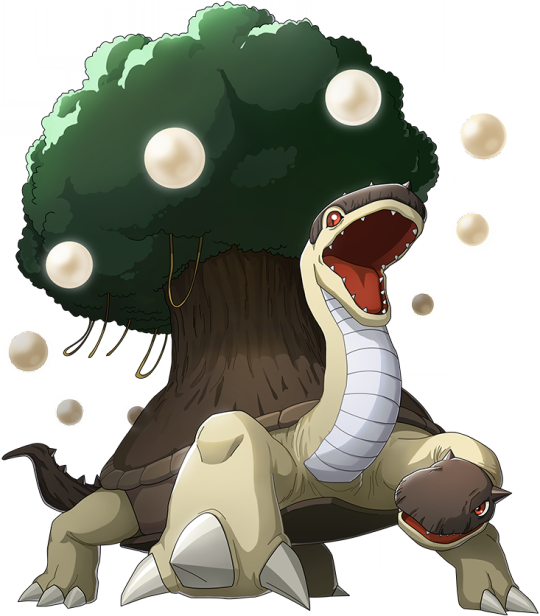
The Deva who serve Xuanwumon are Kumbhiramon the mouse, Vajramon the bull, and Vikaralamon the boar. Kumbhiramon is usually depicted as the weakest of the Deva, but is very intelligent, capable of predictions the actions of others, and participates in Xuanwumon's philosophical musings. It is also rather rude and sarcastic while playing up its charming and cute aspects. It's weapon is the Bǎo Chǔ, a vajra (type of Indian club) that it controls with telekinesis. This is one case where its namesake does use the same weapon and it functions as a pun since "chu" is the Japanese onomatopoeia for a mouse's squeak.

Vajramon is the most physically strong of the Deva and is a mighty warrior who seeks truth and honor and despises cowardice. It also aims to rid itself of material and emotional concerns, fitting the Buddhist origins of the Deva. It wields the Bǎo Jiàn, a pair of swords, which fits its legendary counterpart.
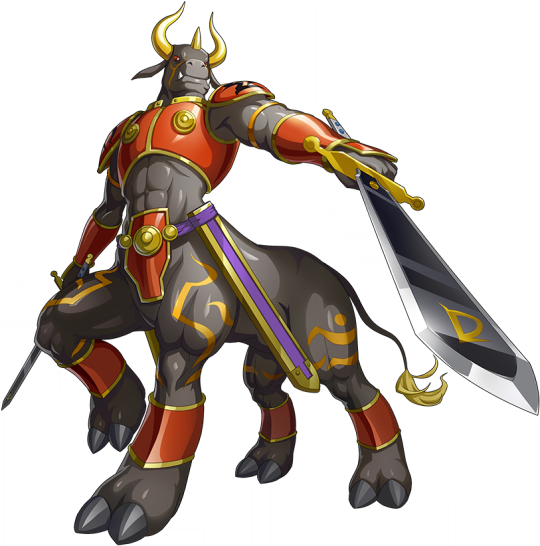
Vikaralamon is the largest of the Deva. It is detached, preferring to silently observe the world form a distance and only steps in when it needs to. It may also just be lazy as it sleeps a lot and can sleep with its eyes open. Its weapon is the Bǎo Lún, wheels that it spits out of its mouth and which have different effects depending on what color they are. None of the Heavenly Generals uses a wheel. Its namesake instead uses a sword or vajra. The wheel is a common symbol in Buddhism used to symbolize the cycle of death and rebirth.
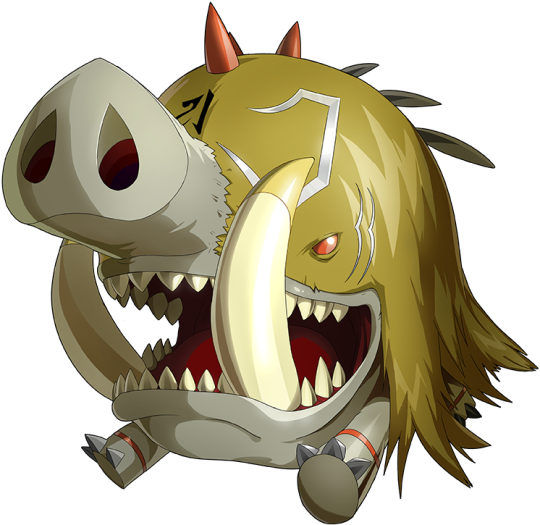
The Holy Beast of the west is Qinglongmon (Azulongmon in English), a dragon made of storm clouds. It is based on Qīnlóng, the azure dragon of the east. It is associated with the season of spring and the element of `wood. Xuanwumon seems to have stolen the wood though, given it has a tree on its shell and Quinglongmon has nothing woody about it. Quinglongmon is described as a dispassionate deity who rarely concerns itself with humans or weak Digimon and will only step in when things get serious. This is in contrast to its anime appearances, where it was the most helpful and proactive of the four. Quinglongmon is also a member of the Four Great Dragons, possibly the least utilized group in the franchise. They exist as nothing but a reference to the Chinese Myth of the Four Dragon Kings.

The Deva that serve Quinglongmon are Andiramon the rabbit, Majiramon the dragon, and Mihiramon the tiger. Andiramon (Antylamon in English) is the first of the Deva to debut, predating the group as a whole, though in a different form. There are two forms of Andiramon, Andiramon (data) and Andiramon (virus) with the former being treated as the normal form and the latter being a corrupted version of the Deva as a result of a computer virus. Andiramon (virus) appeared before Andiramon (data). Andiramon is also the only Deva with a dedicated evolution line from Child/Rookie to Ultimate/Mega. Andiramon is a gentle Digimon that loves small and cute creatures and will defend them. Its weapon is the Bǎo Fǔ, which are its own hands transformed into axes. Its mythical counterpart instead uses a mallet or whisk.

Andiramon (data)

Andiramon (virus)
Majiramon is the most capitalist of the Deva. It is extremely greedy and will not lift a finger to do anything that doesn't benefit itself. It also puts a monetary value on everything and will intervene if anything upsets the flow of money. Its weapon is the Bǎo Shǐ, arrows formed from its hair, each of which is worth 5,000 yen. Its associated General is usually associated with bows or spears.
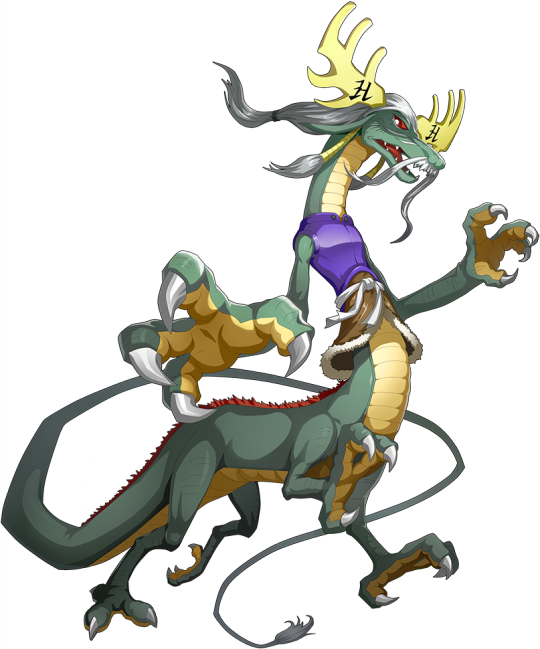
Mihiramon is a scoundrel and a ruffian that enjoys picking fights, but is also the Deva's best strategist and possesses a brilliant tactical mind. Combined with its ability to fly and incredible speed, Mihiramon is one of the best fighters amongst the Deva. Its weapon is the Bǎo Bàng, a three-sectioned staff connected by chains that it can turn its tail into. Think a souped-up nunchuck. Its mythical counterpart uses a vajra instead.
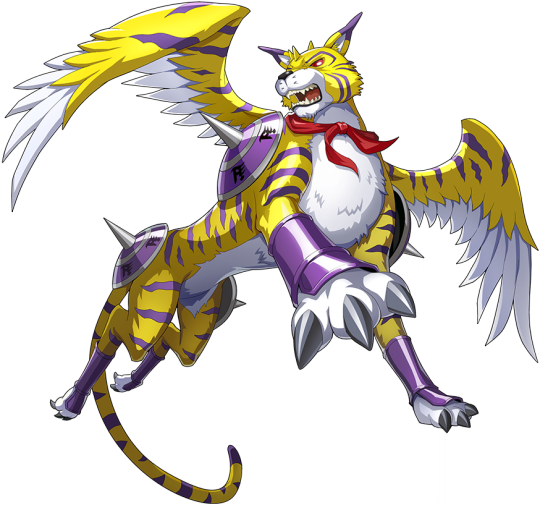
The Holy Beast of the South is Zhuqiaomon. It is based on Zhūquè, the Vermillion Bird of the south. The bird is described as a pheasant with five-colored feathers and that is perpetually covered in fire. Fittingly, its season is summer and its element is fire. Zhuqiaomon is also a flaming bird that attacks with fire. It is the least pleasant of the Holy Beasts, a violent and often cruel god who incinerates those who approach it and rarely helps out others. Fittingly, its sole major anime appearance was as a villain.

The Deva who serve Zhuqiaomon are just as assholeish as their master. They are Indaramon the horse, Pajiramon the sheep, and Sandiramon the snake. Indaramon is a vain asshole that spends its time bragging about talented it is. It even looks down on those who value hard work as it views them as inferior to its natural talent. Despite fussing over its appearance, it is completely unrefined in battle and fights like a berserker. Its weapon is the Bǎo Bèi, a giant gilded conch shell that it uses as a bludgeon and as a horn that can release ultrasonic blasts. Its mythical counterpart instead used a staff
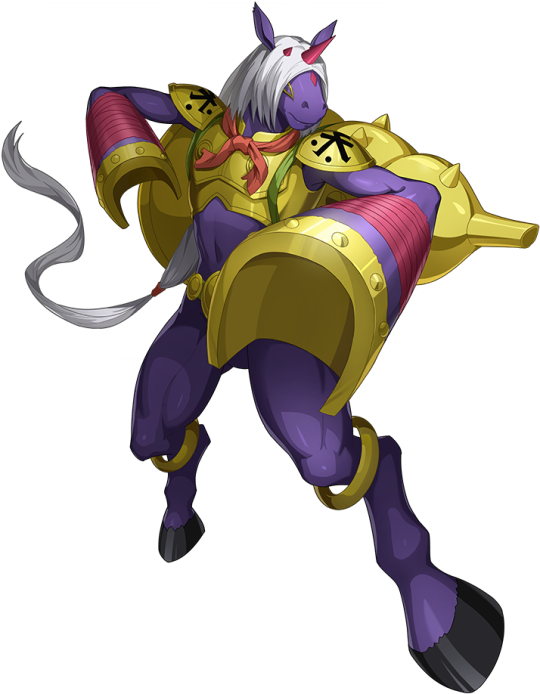
Pajiramon is one of the coolest Deva and one of the evilest. It rules the world of dreams and knows many dark secrets that it divulges to no others. It even avoids the other Deva. While it is described as always calm and yet cruel to others it gives me the impression that the secrets it holds are so dangerous that it must stay away from others at all costs. Its weapon is the Bǎo Gōng, its crossbow that fires arrows which can put others to sleep and trap them in nightmares. It's mythical counterpart also uses a bow.
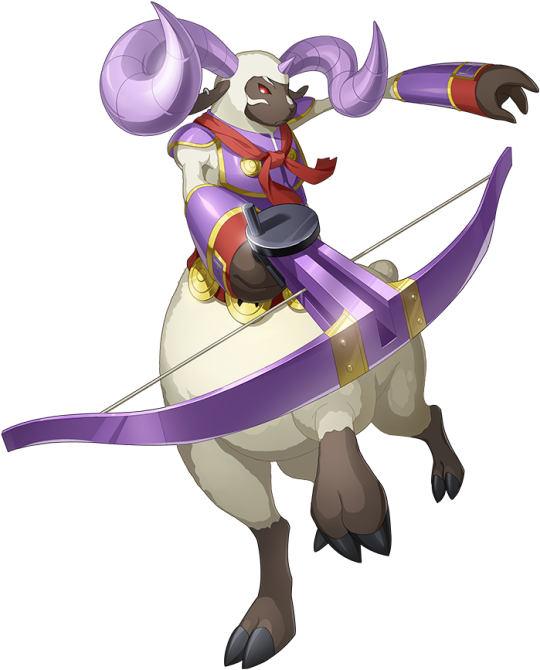
Sandiramon is the cruelest and most cunning of the Deva. It prefers to draw out fights and kill its enemies in slow and torturous ways. It also lives underground and excels in subterranean combat. Why do snakes always have to be evil? Let us have good snakes damnit. I really don't like it when a group of animals are always or almost always villains in fiction, like sharks, rats, vultures, and snakes. Its weapon is the Bǎo Kuí, spears made of light that it spits out of its mouth. Its mythical counterpart uses a sword or conch shell instead.
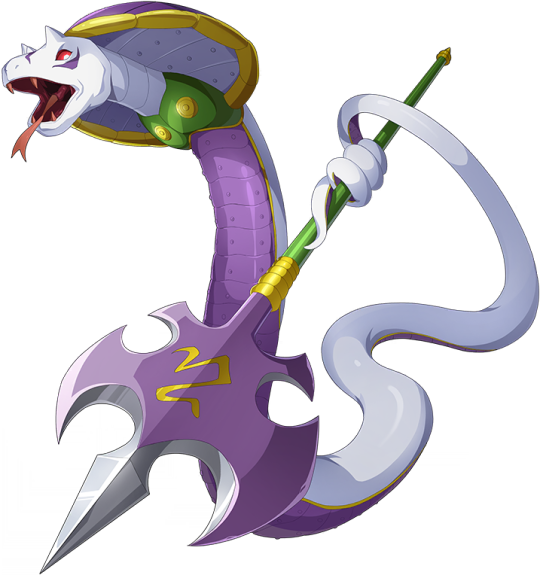
The Holy Beast of the west is Baihumon. It is based on Báihǔ, the White Tiger of the West. Báihǔ is associated with autumn and the element of metal. Metal is fitting for Baihumon as it wears metal armor and can unleash a roar that turns targets into metal statues. Baihumon is the youngest and strongest of the Holy Beasts. It is a neutral being that prefers not to get involved in most matters, but is the first Holy Beast to leap into the fight against a powerful enemy.

The Deva that serve Baihumon are Caturamon the dog, Makuramon the monkey, and Sinduramon the rooster. Caturamon has a strong sense of justice and will preside over judgement of others, proclaiming them as good or evil. It's view of justice is very black and white and it doesn't like dealing with situations without a clear good and bad side. It also acts like an older brother to its fellows, something they do not seem to reciprocate. Its weapon is the Bǎo Chuí, a giant hammer it can transform its whole body into. Its mythical counterpart uses swords instead.
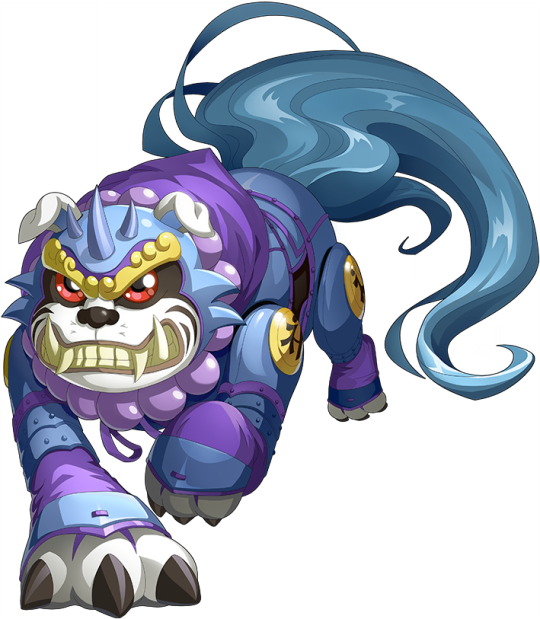
Makuramon is interesting it that it almost never speaks and its face remains completely expressionless. This would make its emotions enigmatic, but its body language is extremely expressive, showing it to be hyperactive and extremely curious, though with a short attention span. It dislikes battles and prefers to trap enemies and settle fights nonviolently. This is opposed to its major anime appearance, where it was a total asshole. Its weapon is the Bǎo Yù, spheres that can be used to trap other Digimon. Its mythical counterpart prefers an axe.
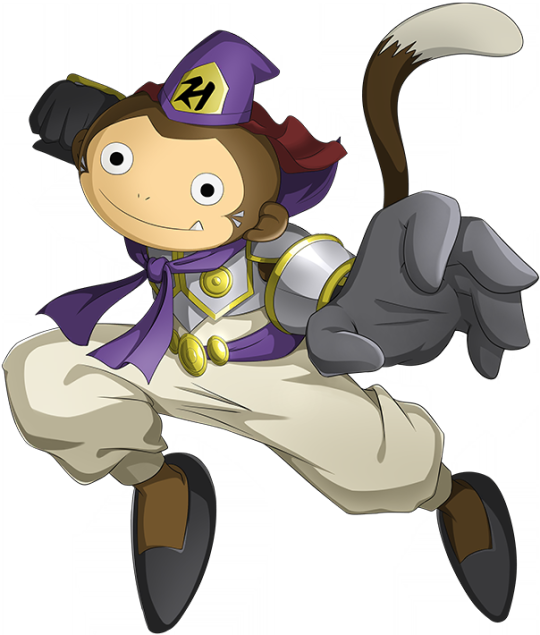
The last Deva is Sinduramon, which also sounds like it would be unpleasant to be around. It's a gossip that loves to give insults and pick fights, then it hides inside its armored shell when this inevitably gets it into trouble. I know some people like that and they suck. Its weapon is shared with Kumbhiramon, a vajra called Bǎo Chǔ. Sandiramon's vajra can shoot lightning. Its mythical counterpart also uses a vajra, but a single-pronged one instead of a three-pronged one.

The leader of the Holy Beasts and one of the most powerful Digimon in existence is Huanglongmon (Fanglongmon in English). It is based on Huánglóng, the Yellow Dragon of the Center. It is considered the incarnation of the supreme deity that is the Yellow Emperor and its color represents the earth. It represents the changing of the seasons and the element of earth. Huanglongmon is associated with earth in that it is trapped in the center of the world, from which it observes the Digital World and oversees the other Holy Beasts. In the distant past it was free, but when Lucemon (Digimon's devil) rebelled against God, it trapped Huanglongmon as its first act since its rebellion would have been foiled were Huanglongmon around to oppose it. The imprisonment of Huanglongmon caused the other Holy Beasts to begin fighting for supremacy, but they eventually settled into an equilibrium. Huanglongmon's body is coated in the ultra-rare metal Huanglong ore, which is utterly indestructible. Assimilating Huanglong ore into one's body is a process that takes so long that only Huanglongmon is old enough to actually use it. Huanglongmon is both good and evil, having achieved true balance. If that balance is thrown off, bad things can happen. Specifically, if it leans too hard to evil it will become Huanglongmon Ruin Mode, an unstoppable god of ruin whose rampage was only stopped when the other Holy Beasts restored the balance. This would imply that it also has a mode where it leans too hard to good (Holy Mode? Creation Mode?) but this have never been made official.
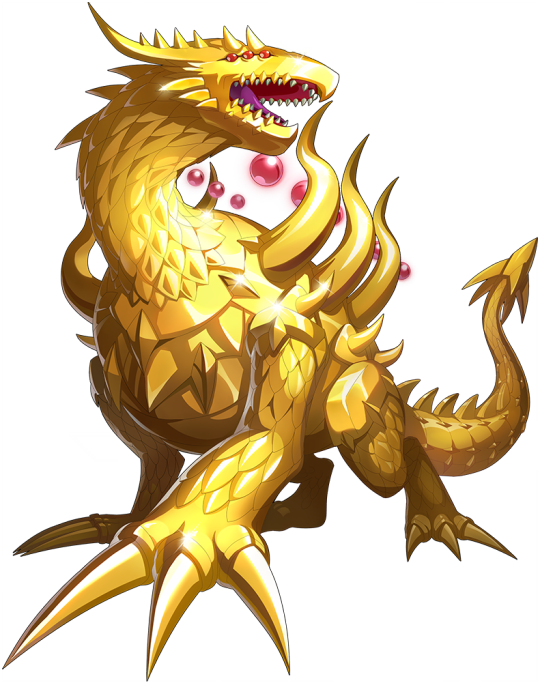
Huanglongmon
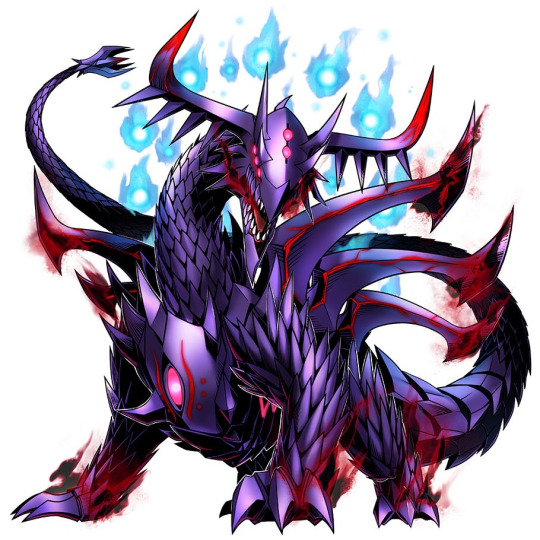
Huanglongmon Ruin Mode
#digimon#holy beasts#digimon sovereigns#mythology#chinese mythology#hinduism#hindu mythology#buddhism#buddhist mythology#deva#digimon deva#twelve heavenly generals#four symbols#xuanwumon#ebonwumon#quinglongmon#azulongmon#zhuqiaomon#baihumon#huanglongmon#fanglongmon#andiramon#antylamon#vajramon#kumbhiramon#vikaralamon#majiramon#mihiramon#indaramon#pajiramon
33 notes
·
View notes
Text
hnk stuff from reddit
The running joke is that you need a PhD in Japanese Pure Land Buddhist philosophy to understand what is going on. The main thing to get is that HnK is a critique of Pure Land Buddhism.
As for discussions on ship of theseus or plato's save this is anglosphere Westerners trying to use Western philosophical terms (which are more familiar) to interpret the existentialist themes inherent to Buddhism.
Most of this stuff is searchable on the internet. But you can also look up a primer on Buddhist philosophy and Mahayana Buddhism in particular which is the form most popular in East Asia.
Other than that there was this one imgur post going around compiling mythological references but I don't remember where it it.
Specifically ship of theseus/grandfather's axe deal with the question of what is the essence of something (or someone one). If something keeps changing having it's parts replaced with different parts at what point is it something different than the original. To understand a more Japanese perspective on philosophy and aesthetics look up kinsugi, wabi-sabi, or even the shinto influences on Japanese Buddhism.
Plato's allegory of the cave is about perspective, experienced versus objective reality, what is real, and knowledge. Some's dude's only seen the world through the shadows cast on a wall, then leaves the cave and realizes that everything they're seen has been shadows.
Some basic extremely simplified highschool takeaways for Buddhism is that suffering or discomfort (durka) is inevitable in life, this suffering stems from attachment to the world and desires (of any kind). Life is in a cycle of reincarnation (samsara). The way to break free of the cycle is to reach enlightenment (nirvana) by freeing oneself of all desire. In Mahayana Buddhism someone enlightened may instead choose to remain in the world to guide others becoming a bodhisattva. In the context of history this allowed Mahayana Buddhism to better adapt to local religions as it spread across Asia, incorporating local religions and deities. Thus Japanese Buddhism is descendent from Chinese Buddhism and you can see the Chinese influences in it (same with Korean Buddhism). Chinese Buddhism itself was influenced by other non-Indian cultures along the silk road in Central Asia (Persia, etc). So the route Japanese Buddhism took was from India to Central Asia then China before finally coming to Japan. Honestly just read the Wikipedia page on Buddhism it explains thing better than I can.
I'm not well versed enough in Buddhism to have a good guess but here's some notable plot points in relation to Buddhist themes in HnK.
https://semi-imaginary-place.tumblr.com/post/732170126864105472/ichikawa-intended-for-phos-to-be-a-failed-7
Phos is set up narratively to gain all 7 jewels/treasures (houseki) of Buddhism and then the author deliberately makes it so he doesn't. Phos gets the wrong final jewel. Phos gets shell and agate legs, gold platinum alloy arms, Lapis Lazuli's head, and Achemea implants an artificial pearl eye into their head. The last treasure Phos was missing was a red gem/carnelian/coral. But instead Phos got Adamante's eye and became "human".
Humanity failed to go extinct. Their souls, flesh, and bones existing separately and simultaneously in the world. Instead of continuing the cycle of reincarnation the Moon People/Lunarians are stuck in a state of neither life of death, stagnant. Instead of striving to reach enlightenment they seek complete annihilation the cessation of existence. To these descendents true humans are as to gods, the only ones with the power to have them die.
There's also a lot of ominous imagery. Like the lotus is probably the most significant symbol in Buddhism representing enlightening and the cycle of reincarnation. And Phos is associated several times with an empty lotus seed pod, like that he has failed Buddhism or something, the lotus failed to complete it's lifecycle and will not be born again from it's seeds.
I honestly don't have any conclusions what to make of all this, still mulling over it all.
15 notes
·
View notes
Text
🦇 Ever wondered why Asagiri Gen is sometimes compared to a bat?
Me too, so I did some research! :)
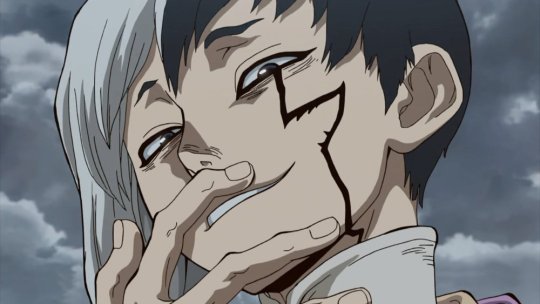
Firstly: the origin.
The usage of "bat" to describe Gen seems to mainly be in the first half of the series, and it's not a nickname given by only one person. Several people use it, including Gen himself.

Chronologically, the first instance was when Gen wandered back to the science shed alone after they'd completed the Sulfa drug, as he wasn't allowed inside the village. This happens in chapter 40/episode 15.
The Japanese word for bat is コウモリ (koumori).


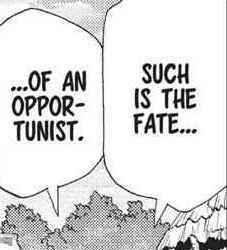
However if you were watching either the English dub or reading the manga, this reference would have been completely gone! Instead, Gen refers to himself as an "opportunist", and the dub replaces "bat" with "rat".
The next instances were both during the katana fight against Hyoga, in chapter 48/episode 18. First, Kohaku calls him a bat after she assumes he'd gone and betrayed them.
(In Japanese, bat can also be spelt as 蝙蝠, and is pronounced the same way)

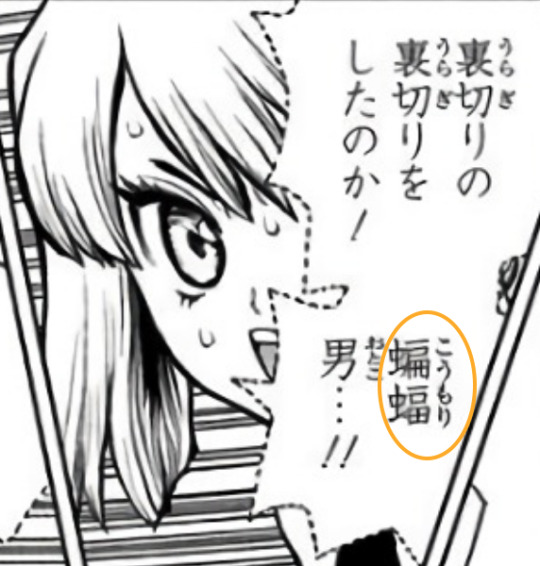

Again, the dub replaced "bat" with "rat", and the English manga translation uses opportunist instead.
The final instance I found was from Hyoga a short while later, when he gets betrayed by Gen, but for real this time. Both Kohaku's and Hyoga's usages are very negative and insulting, especially in the subs.
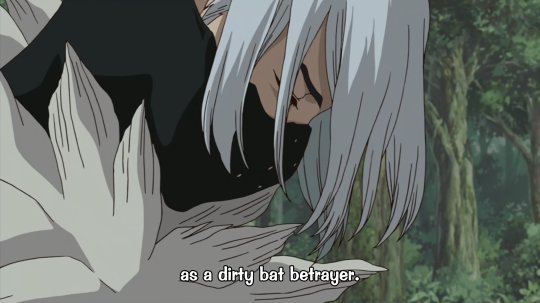

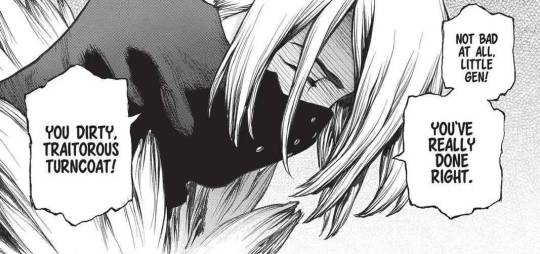
(For completeness again, I'm adding Hyoga's manga translation which is similar to his dubbed line, "filthy turncoat". As @DrStoneShots on Twitter said, Hyoga can be surprisingly eloquent lol)
So now the question is, why "bat bastard"? Why not "slithering snake" or "wriggly worm"? They've all got the same negative connotation of a crafty conman, right?

Let's start with the western view of the bat. Normally they're associated with Halloween, and thus remind us of things like darkness, death, witchcraft, and malevolence.
Native Americans consider them tricksters as well.
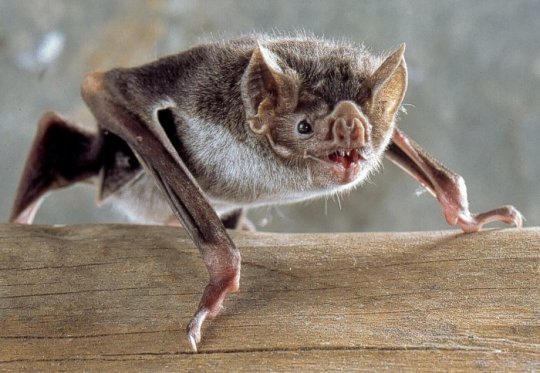
So far it sounds like it's suiting Gen's initial malicious mentalist persona quite well. I mean, he died, came back to life, uses poisonous flowers for his tricks and tricked Magma into thinking he'd die if he took so much as a single step.
…But then why call yourself a bat?
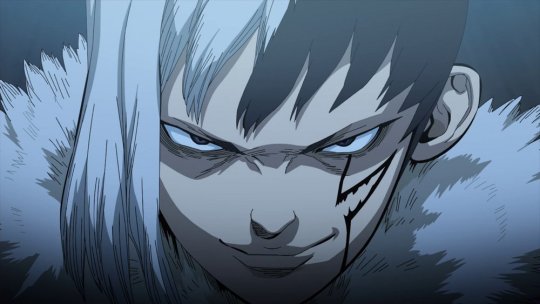
As it turns out, the symbolism associated with the bat in China and Japan is slightly different. Up until the 20th century, bats were popular in Japan thanks to influence from Chinese culture, where they are seen as a symbol of happiness, good fortune, a long life and good luck.
(Side note: I wonder if bats being associated with good luck, and therefore Gen by extension, is a narrative foil for Senku's extraordinarily bad luck?)

Now that we have both the bad and good of bats, why does the translation of bat->opportunist/turncloak arise when neither the western nor eastern interpretations mention anything about it?
Turns out, it's actually from one of Aesop's Fables, "The Bat, Birds, and The Beasts".
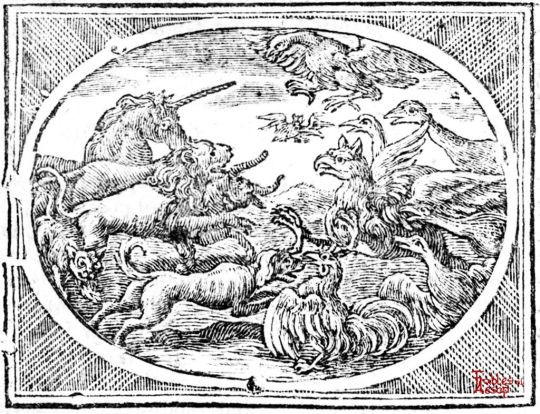
If you're not familiar with the story: the Birds and Beasts were fighting, and asked the Bat which side they were on, as they could both fly like the Birds and were furred like the Beasts. The Bat, uncertain, fought on both sides—choosing whichever was winning at the time.
The result was that afterwards, the Bat had no friends as they'd betrayed both sides several times, and ended up getting attacked by both the Birds and the Beasts, who now had a common enemy.
The alternative ending is that the Bat was not allowed to partake in the peace party.
Sound familiar? On several occasions, especially early on in the series, Gen felt like he had to keep a certain distance away from everyone, otherwise he'd get injured. He kept himself closed off and his true intentions hidden to stay safe. (Although he still got stabbed…)

The good news is that this particular bat's story ends happily, and with a whole kingdom's worth of friends. He learnt to open up and devote himself to a cause, even though it was risky to himself. His selfishness turned into selflessness when it truly mattered.
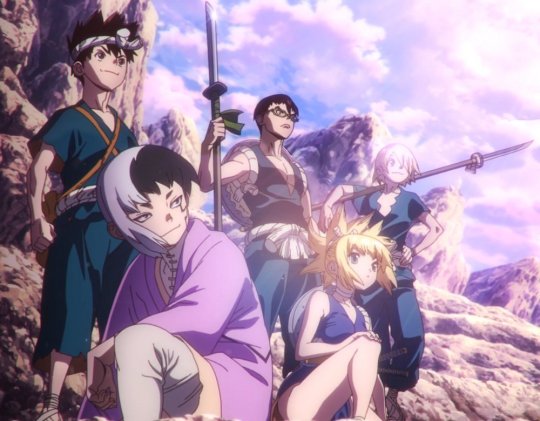
End of thread!
This was actually a request from @obviously6969 (on Twitter), who wanted me to find out more about Gen + bats! Now the only question is, can someone relate Gen to the Miracle Cave via bats… 🤔🦇
49 notes
·
View notes
Text

Lady Kikyo Takahashi - 14 associations
(1) Animal: The Turkey Vulture. Cultures linked them with death because they eat carrion/would gather in the sky when remains were found signaling something had died. However, they actually perform a great service cleaning up bodies that could spread disease. They are a cleansing breeze sweeping up after death.
(2) Color: Red - In the cultures she identifies with, red is said to keep away evil/vile spirits, it represents strength and protection. It is also auspicious, symbolizing happiness and good fortune.
(3) Song:
I usually have non-lyrics for her purposely, because she can not speak, so I tend to lean on traditional Chinese and Japanese songs that can invoke a feeling. One that I always send others is a playlist called "You're a Heartbroken Empress" - though there are just a few handful that do have lyrics that would be suitable for Kikyo depending on circumstances! Rebirth: Warning - Incubus / 3 Libras - APC Love song: The Garden of Everything - Maaya Sakamoto / Steve Conte - every line is perfect for her: " Every touch, a temptation, and for every sense, a sensation.. " I have a few more but let's move along!
(4) Number: 3 - It represents the three stages: birth, death, and rebirth.
(5) Day or Night: Evening, she blooms under the tapestry of darkness.
(6) Plant: Hinganbana (flower) - The death bloom, known also as the corpse flower, when the season of summer shifts to fall, the flower rises from its dormancy.
(7) Smell: Frangipani ( plumeria ) a soft scent, though is associated with ghosts.
(8) Gemstone: Black Tourmaline, representing spiritual strength, remembrance and protection.
(9) Season: Autumn. When the splendor of life comes to fade, and we are greeted with the warmth of colors amid the cool chill of what is yet to come.
(10) Place: Othard. A land marred by the atrocities of war and loss, but where her fondest of memories yet are planted in its foundation.
(11) Food: Anything related with savory fish, cold noodle dishes, cute shaped foods that are vibrant with color. Traditional meals. 🍣🍘
(12) Astrological Sign: Though she is not Eorzean, I would choose Nald'thal in this case due to her adoptive family dealing with commerce and a different sort of underworld, while she herself deals in death.
(13) Element(s): Ironically, water ( if you know her lore, you'd know why ) for its pliancy, its gentle nature and cleansing qualities. It also represents death and rebirth, surprise!
(14) Drink: Matcha. Due to the elegant art that comes with the tea ceremony which involves in making and serving it. 🍵
tagged by the loveliest, thank you so very much. Decided to do this for Kikyo instead since Rivienne is a bit on the retired end: @alannah-corvaine | @chadhunkler | @allyennah tagging: @hallowed-ffxiv | @evuniel | @page-63 | @sealrock | @tsupertsundere and you! Whomever wants to do it, please feel free to tag me!
#oc questions#14 associations#[ ᴏᴏᴄ. ] ᴏᴜᴛ ᴏғ ᴄʜᴀʀᴀᴄᴛᴇʀ#[ out of the woods ]#i never know who has done this so feel free to do it folks
25 notes
·
View notes
Text
We always wear clothing from the time of our birth to the time of our death. Clothing indicates the class or occupation of a person in society. Monks wear a monk’s robe. An emperor wears an emperor’s garment. Soldiers wear a soldier’s uniform, depending upon their position. Farmers wear farmers’ clothes. Rich people wear luxurious garments. Poor people wear cheap clothes. Clothing also shows the national, cultural or religious background of a person. Chinese wear Chinese clothes. Japanese wear Japanese clothes. Americans wear American clothes. When we see people’s clothing, we see who people are in society.
It is not only clothes that we put on to cover ourselves. We wear costumes that show us as rich, poor, or middle class. Occupations such as a doctor, lawyer, mechanic, priest, student, and teacher are also a kind of clothing. But when we sit facing the wall, and let go of thought and association with others, we take off all the clothing.
When we just sit facing the wall, and let go of thought and association, at that time I am not a Japanese Buddhist priest. We are neither Japanese nor American. We are neither rich nor poor. We are neither Buddhist nor Christian. We are Japanese or American, Buddhist or Christian, man or woman, only when we compare ourselves with others. When I compare myself with Americans, I am a Japanese. Until I knew that there are some people who are not Japanese, I didn’t know that I was a Japanese. When we just sit, we are neither deluded living beings nor enlightened buddhas. We are neither alive nor dead. We are just as we are. That’s it. We take off all the clothes and become a naked being in zazen.
[...]
Since our birth, we have had many different experiences. In the process of experiencing billions of things, we create a self-image, such as we are capable or not; we are superior or inferior; we are rich or poor; we are honest or not. This is how we define ourselves. And we grasp ourselves as, for example, a rich, superior, capable person or a poor, inferior, stupid person. These are the selves created by karma. When we sit in zazen and let go, all these self images are ungrasped. When we open our hands, all these concepts drop off. Our body and mind are released from karmic hands. This is what datsuraku means.
As Nyojo Zenji said, when we just sit and let go of thought, we are released from the five desires and six coverings. We are not pulled by objects. We are released from the three poisonous minds that bind us within samsara. This just sitting zazen is itself the practice of nirvana. I am a Buddhist priest. I am my wife’s husband. I am my children’s father. When I am with my family, I am a father. So, I try to play a role of a father at home. When I give a lecture, I am a teacher. So, I try to do my best to talk on Dogen Zenji’s teachings in the most understandable way, though I don’t know whether I am successful or not. These are the costumes I put on in each situation. And I define myself as a father or a teacher, and I try to do my best to play the role in each situation. But when I sit facing the wall, I am not a father. I am not a Buddhist priest. I am nothing. I am empty. I am just who I am. This is liberation from my karmic life.
-- John Daido Loori, The Art of Just Sitting: Essential Writings on the Zen Practice of Shikantaza
8 notes
·
View notes
Text
Performative Slacktivism - Or how CRWBY and the FNDM want brownie points without putting effort into actual representation
(Also, how the FNDM keep using Montys name for petty arguments like the ghoulish fucks they are)
I know that we all are waiting for tomorrows episode and the moderation team is already gearing up for a possible shitshow depending on what the episode decides to do. But today i have noticed a bit of an old discussion rearing up again that i really wanted to adress.
I think i will not be out of line to say that RT is a shit corporation. But that alone does not bother me too much, shit corporations are common in our day and age. What always got to me is how RT kept pretending to be progressive, how they put on a show of being pro LGBT+, pro people of colour and the like, and yet their products have for the most part been devoid of actually showing that.
Sure, the creators will SAY that they are LGBT+, and then take FIVE and TEN years to confirm a single lesbian relationship (Of one which is for side-characters). And they will include a trans character after SEVEN years of production (Only to later be revealed that the person who voice acted that character experienced shitty behaviour at work in regards to their identity).
They will SAY that they are pro people of colour, only for the four main characters of the show be so white they glow in the dark and most dark-skinned characters either being relegated to background characters, antagonists/villains and/or being stereotypes until 4 years after the start of RWBY, Oscar was created? Or should i mention the piss poor writing of their racism allegory and the WF, which is very much created based on the Civil Rights era in the US? Writing so shit that it somehow manages to spread alt-right messages without intending to?
What im trying to say is that RT are and always have been fake ass progressives. They arent even rainbow capitalists, even rainbow capitalists (like Disney) do more than RT. RT does not even bother to put even THAT much effort.
RT wants brownie points for being progressive while being ANYTHING but. That would be bad enough, but the rabid Fandom that RT has cultivated seems to be intent on doing EXACTLY the same.

This is the first tweet that i saw on the topic. Yang is Chinese? Since fucking when? Shes whiter than the fucking white bread i make sandwitches with. She is whiter than the fucking snow! Instead of "using ones brains" maybe you will use your eyes?
This lead me to more brainrot than i could ever post here, so i will only post a few of the comments that i saved before i felt my brain leaking out of my fucking ears.

It seems that most of the "arguments" around Yang being Chinese center around her name (Which, by the way is written in the OPPOSITE way than it should be). Which in my opinion is quite a stupid fucking argument considering that my last name from my mothers side is part Polish and part German (Not gonna post it for obvious reasons), but im pretty fucking sure i aint Polish OR German.
The other argument is that both Yang AND Ruby have Chinese culture in their designs? Let me remind you that Ruby wears a gothic Lolita outfit, wields a Scythe and if i am not misremembering had a fucking cross around her neck. What about THAT is chinese? The ONLY argument there would be that Ruby has Japanese inspirations due to the gothic Lolita outfit. Scythe is associated with European conception of death (And as a farming implement) and the Cross is in the same category. Not to mention that Ruby is based on an European Fairy tale of the Red Riding Hood!
Yang on the other hand is based off Goldylocks (Another European fairy Tale) and has associations with Beauty and the Beast (Yet ANOTHER European fairy Tale). Nothing of what she wears has any distinguishable style. In fact Yang is so generic you can put her anywhere in the world and it would most likely fit.
Also, "Her name references a martial artists" thing really reeks of fucking whiteness. Yes? It does? How is that relevant? If i am named after a martial artist im suddenly Chinese now???
There is also another very unsubtle sinophobia, when talking about the Branwens being Japanese to prove that Yang is Chinese... I know that to Americans regions very much become blurred but holy shit, the LACK of thought that China and Japan are not the same just because they share a race is...... Its fucking insane...
The only partially valid argument i have seen is that people of White colour can also be Chinese/Japanese or come from any part of the world. Which is fair. IN THE REAL WORLD. This aint the fucking real world! This world of Remnant is created! They dont even have our countries! Mistral has a mix of Japan/China/Greek aesthetics.
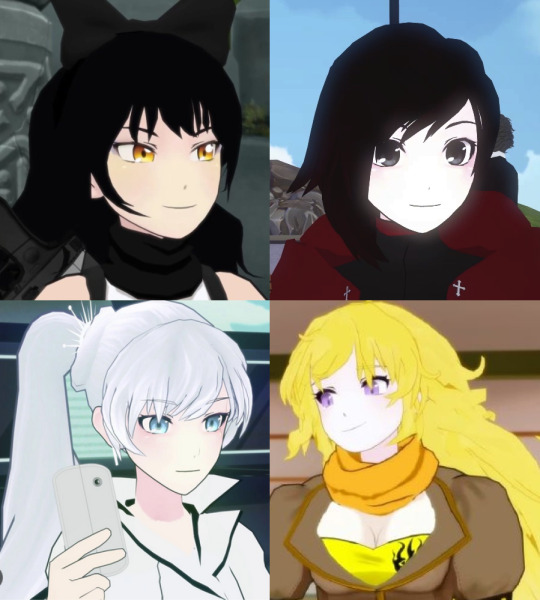
JUST LOOK AT THEM! The supposedly "German" Weiss somehow has MORE colour than the "Chinese" sisters! Blake is the only one that has actual colour in her cheeks (And is STILL white). Ruby and Yang look like they would glow in the dark if i turned off the light! They would make a fucking shut-in blush with how pale they are! They are whiter than the milk in my fucking Cereal!
And you know what makes me mad? Because the show COULD have made these people actually have features of people of colour. Blakes Parents live on a TROPICAL ISLAND! Why the fuck is Blakes skin not olive or even darker? It COULD have been! But it isnt! IF Yang and Ruby are Chinese, where the hell are there ANY identifying features of them being Chinese?
The reason is simple. RT DOESNT CARE ABOUT REPRESENTATION! IT does not give a single solitary shit on a sunny summer afternoon about progressivism. The main 4 characters of the show are 4 glow in the dark white girls voiced by.... White women! (Yknow, its funny how they say that Yang is chinese and then full on not even acknowledge the good old chestnut of "Minority roles should be given to minorities")
I hate these fake progressive fuckers from the bottom of my heart. These people are more interested at licking the boots of a shitty corporation than actual representation! There is no argument, no LOW these fanatics will not sink to as long as they can worship a capitalist corporation, and im sick and tired of them pretending to be progressive. Because they fucking aint.
Also...

I hope that the fandom who weaponizes Monty. Burns to the ground. Previously, i did not care about V10 being greelit. I would not mind if it got greenlit or not. But when i see shit like this, all i wish is for V10 to never be greenlit. So that ghoulish corpsedigging necromatic fucks would fuck off.
Imagine using Monty as a cudgel for petty internet arguments. The fandom is a shithole, and they can PRETEND to be nice all they wish. But everyone can see these fuckers act like this.
38 notes
·
View notes
Text
Hello beloved mutual @nunaco!!! You keep on talking abt the colours of the dragons and the connection to their riders through that and it is just. so fascinating. So I've decided I'm going to dissect that!! The Fire Nation draws many elements from Eastern culture, largely Chinese and Japanese culture, so I'm going to talk abt Western (for a base to work off of, as I am American and would like to see if Western culture had any influence), Chinese, and Japanese colour meanings!! In this context, Western means American interpretations & culture. Also, fair warning, Sozin's parts are longer than Roku's because Sozin is a very convoluted character and he's my Special Little Boy™. Everything is beneath the cut!
This is going to be done alphabetically, so we're going to start with China- Roku first and then Sozin. In Chinese culture, red means/represents yang energy ("active" energy), fire, good fortune, vitality, long life, happiness, success, and is also closely associated with marriage! We can see an obvious thing that is applicable to Roku right off the bat: fire, as he was born and raised in the Fire Nation. The only other thing that would be obvious would be long life, as Roku lived to be 70. Hilariously enough, there are quite a few things that aren't as applicable to Roku, such as success and good fortune, for reasons of the Eruption scene and what happened with Sozin after his death. The marriage part is somewhat applicable, since he did get married to Ta Min (our queen❤). We're going to... ignore... the secondary meaning of vitality and focus on its primary meaning—that being "the state of being strong and active"—and its connection with yang energy. Yang energy is the "active" principle, and is represented by the white colour in the Yinyang symbol, which also symbolises the moon (Tui) in Episodes 19-20 "The Siege of the North 1/2". Roku's thing was that he was active, but not where it was desperately needed. He tried to maintain his neutrality, but in doing that he ignored the warning signs in the Fire Nation, from Sozin, until the warning signs were warning sirens and blaring right in his face. He acted far too late in every circumstance with the Fire Nation. He was too late to prevent the colonies in the Earth Kingdom from being established, and he was far too late to stop Fire Lord Sozin from starting the 100 Year War and slaughtering the Air Nomads.
Now, onto Sozin!! In Chinese culture, blue is interchangeable with green, as they shared a single character (青, qīng). Blue means/represents health, prosperity, harmony, spring, immortality, and advancement. There is one thing that doesn't fit with Sozin's character, and that would be spring, but the rest can be applied in multiple ways. Health can be applied to Sozin's character, as he lived to be 102 years old and had Azulon when he was 82, which would be very... unlikely for anyone to be able to do, to say the least. Prosperity and advancement can both be applied, as Sozin said in his proposal to Roku that the Fire Nation was experiencing a time of astounding good fortune and wealth, presumably because of his management or just good fortune. Advancement can also be attributed to him because of the industrial boom that the Fire Nation experienced with the beginning of the war and during it—we can see the Fire Nation with coal-based technology several times throughout the series, something that seemingly none of the rest of the nations have, including: Azula's train-car-thing in Book 2, Episode 8 "The Chase"; the drill used by the Fire Nation to break through Ba Sing Se's outer walls in Book 2, Episode 13 "The Drill"; and the tanks seen throughout the seasons, notably in Book 1, Episode 17 "The Northern Air Temple", Episodes 19-20 "The Siege of the North 1/2", and in Book 3, Episodes 10-11 "The Day of Black Sun Pt. 1 & 2". Immortality can also be applied to him in a way, as his legacy lived on through the 100 Year War, since he started the war and committed so many atrocities (namely the Air Nomad Genocide), and the naming of Sozin's Comet. Harmony is probably the most accurate trait to associate with Sozin- harmony plays an important part in his actions and character, tipping the balance unevenly both in the world and the Avatar. Sozin's actions against the Air Nomads tipped the world out of balance, as well as him starting the 100 Year War, but also because of his personal relationship with Avatar Roku, he tipped the balance of the world in his favour ever so slightly, as Roku would be less harsh with him than others due to their shared history. This could be turned into a paper in of itself, but this is supposed to be about the colour symbolism, so that will have to wait.
In Japanese culture, Red means/represents strength, passion, self-sacrifice, and blood. For Roku, many of these meanings can be applied. Strength and self-sacrifice are both applicable hand-in-hand, as being the Avatar grants one insurmountable and unbelievable power, but you would also sacrifice your own life for the world and protecting those within it regardless of any feelings you may have. This is also interesting because Roku couldn't bring himself to fully sacrifice all of himself and his personal life; he had the clear opening to kill Sozin, who he had been friends with for years, and prevent the 100 Year War from starting and the Genocide of the Air Nomads, but he didn't. He couldn't bring himself to sacrifice Sozin's life for the good of the world, even when he explicitly went against Roku's warnings, and because of this the world suffered. Blood could be applicable in Roku's case as both the blood he could have prevented from being spilled if he had acted sooner, and the blood-brother-like bond that he is shown having with Sozin, though the depth of their relationship is often speculated to have run deeper than just brotherly love by many. Passion is the only thing that can only loosely fit with Roku's character. We do not see him acting very strongly in any emotion throughout the show except for the one scene in Book 3, Episode 6 "The Avatar and the Fire Lord", when he attacks Sozin after confronting him about the Fire Nation colony that had been established in the Earth Kingdom against his direct warnings, and the scene at the end when Sozin leaves Roku to die at the hands of the volcano. Aside from those scenes, there are not many with Roku acting on or showing any explicit passionate emotion, like extreme love or anger.
In Japanese culture, the character for Blue also used to mean both green and blue, though nowadays blue stayed ao (青), the original character for both green and blue, and green is now referred to with the character midori (緑). Blue means/represents coolness, passivity, and fidelity. At first glance, passivity and coolness do not apply to Sozin's character at all, considering his confident, straightforward behaviour in his youth that we see in Book 3, Episode 6 "The Avatar and the Fire Lord", alongside his extreme rage when Roku ends their relationship to the point where he actually attempts to kill him in an inferno-type fire-blast. However, it is applicable when it is taken into account Sozin's plan of action for the war. He waits patiently and accepts it when Roku threatens his life- he redraws his forces from the Earth Kingdom and gives up the colonies that he had put there. He waits for Roku to die one way or another, as Sozin does not have the power to face up against Roku's Avatar Powers, and the Volcano erupting on his island was the perfect way to get rid of him without having to directly confront him, even if he didn't initially know it. After Roku's death, he waits for the comet, renamed "Sozin's Comet" later, and uses its power to kick off the war by genociding the Air Nomads in an attempt to kill the Avatar and prevent him from stopping the Fire Nation's assault against the other nations. Now, fidelity with Sozin's character was what was going to be saved for last because it's so fascinating and interesting as to how that fits in with Sozin's character. According to Merriam-Webster's Collegiate Dictionary, fidelity means "strict and continuing faithfulness to an obligation, trust, or duty." Despite Sozin having a deep connection with Roku, being friends from when they were young, he demonstrates almost no faithfulness to him outside of when they were young. When Roku gives Sozin a somewhat warning on his wedding about his ideas to expand the Fire Nation, it's not an explicit order so Sozin goes ahead. However, when Roku flat-out tells him to not continue expanding and establishing colonies, he doesn't. This is most likely because of the death threat that went with this order, not because of their connection from when they were young, but either way could be argued so I'm including it (I personally believe that it was a mixture of both reasons). However, after all their time apart, when Roku's island starts suffering from volcanic eruptions, Sozin is there and ready to help. Because of Sozin's assistance, they manage the second eruption and prevent deadly repercussions from hitting the rest of the world. It takes Roku on his knees, begging for help, for him to realise that with Roku dead, his plans for expanding the Fire Nation would be free to proceed. Thus, fidelity fits with Sozin's character as both something that he has and also lacks, something that comes instinctually to him but also something that he will ignore and refuse when it benefits him and his plans.
Wahoo, now finally onto the Western colour meanings with Roku!!! Red in Western culture largely means/represents love, passion, excitement, desire, heat, aggression, danger, fire, blood, violence, and urgency. The things that go along with Roku’s character would be love (his love for his wife uwu (and maybe Sozin??)), heat bcs he’s from the Fire Nation and the first thing that he bent (that we know of) was fire, desire because his desire to both be a good Avatar and friend to Sozin conflicted to the point where Roku basically doomed the world because he still wanted to show Sozin mercy due to their past connection. Finally, danger because he is literally the Avatar, one of the most dangerous things in their entire world—the Avatar has god-like power and abilities, you'd be crazy to not think the Avatar to be dangerous. The things that would be strange and/or unlableable would be excitement, as excitement is an emotion and could be used sometimes, while at other times it is unusable. It's like soggy or wet—it could be used sometimes, but not all the time. The things that I would say don’t fit with his character would be aggression, urgency, and violence, as Roku was known to be a very unaggressive/nonviolent Avatar and did not handle the Sozin Situation™ urgently enough to stop his imperialist expansionist ideas from running rampant and being inflicted upon the world.
And finally, at the end of this long analysis, we get to Sozin and how blue is interpreted in Western culture. Blue in Western culture usually means/represents authority, calmness/tranquillity, loyalty, masculinity, sadness, safety/security, and trust. The traits that go along with Sozin the best would be authority and calmness/tranquillity. He's the Fire Lord, since birth he had been trained to exude authority and regalness—it is literally his job to be authoritative. Calmness/tranquillity also is a big part of his character, as even though he is upset with Roku over the rejection of his plan to expand the Fire Nation, he doesn't confront him further about it, choosing to spend his time preparing to invade anyway. Roku and Sozin were still close friends at that point—at no point does it say that their friendship changed, faltered, or drifted after Sozin's proposal—so they must have been communicating frequently enough for them to still be good friends up to that moment. My point is, Sozin must have been able to keep his cool about the whole invasion thing well enough to hide it from Roku as long as he did. The only traits that I can't really pin down as a yae or nae for his character would be safety/security and masculinity. Now, to the ~juicy~ stuff! The traits that interact in interesting ways with Sozin's character would be loyalty, sadness, and trust. The loyalty and trust traits interact with him interestingly for the same reason—they used to be there, but faded away. Sozin used to be someone that Roku could trust, someone who was as loyal to him as he was to Sozin, but due to their positions and ideals they couldn't count on each other anymore. Sadness as a trait regarding Sozin, as I see it, is purely symbolic. It's about the sadness of his relationship with Roku deteriorating, the sadness of two close friends drifting apart/being torn apart by their choices and actions and mindsets. It's about the sadness that comes with seeing them betray each other, Roku "betraying" Sozin in a way in Book 3, Episode 6 "The Avatar and the Fire Lord" by rejecting his proposal, and Sozin betraying Roku by not only ignoring his orders on the expansion of the Fire Nation into the Earth Kingdom, but also leaving him on his island alone, choking on poisonous gas as his home comes down around him.
In conclusion, I believe that the meanings behind Roku and Sozin's dragons seem to be evenly influenced by both Eastern and Western cultural meanings. If I had to pick, though, I'd say the Japanese cultural interpretation of the colour red fits best with Roku's character, and the Western cultural interpretation of the colour Blue fits best with Sozin's character. There are so many other cultures that influenced the Fire Nation's design, but I wanted to keep this short-ish and within my ability, so I went with the two most prevalent influences that I could see, as well as including a Western viewpoint. I did my best to provide an unbiased opinion, which is kind of necessary when dealing with Sozin's character, and I apologise if I did not do so.
Could this also be the animators/designers wanting contrasting colours, blue vs red? Yeah, but ~colour analysis~
I hope you enjoyed reading this, and if you have any arguing/conflicting points I'd be happy to hear them! Just please don't call me a dumbass or be mean, because I am a sensitive sensitive little guy who WILL cry 🥺😞
Works Cited
"Color in Chinese Culture." Wikipedia, en.wikipedia.org/wiki/Color_in_Chinese_culture. Accessed 16 July 2023.
"Color Meanings in Japan." Color Meanings, www.color-meanings.com/color-meanings-japan/. Accessed 16 July 2023.
"Color Symbolism in Chinese Culture: What Do the Traditional Colors Mean?" Color Meanings, www.color-meanings.com/color-symbolism-in-chinese-culture-what-do-traditional-chinese-colors-mean/. Accessed 16 July 2023.
"Color Symbolism in Different Cultures Around the World." Color Meanings, Jacob Oleson, www.color-meanings.com/color-symbolism-different-cultures/. Accessed 14 Sept. 2023.
El Shazly, Islam. "Colors Representations in Different Cultures." Globalization Partners International, 29 June 2022, www.globalizationpartners.com/2022/06/29/colors-representations-in-different-cultures/. Accessed 14 Sept. 2023.
"Fidelity Definition." Merriam-Webster's Collegiate Dictionary, www.merriam-webster.com/dictionary/fidelity. Accessed 4 Aug. 2023.
Geeraert, Amélie. "Japanese Colors and Their Symbolism." Kokoro, 15 June 2020, kokoro-jp.com/culture/298/. Accessed 3 Aug. 2023.
"How Color Is Perceived by Different Cultures." Eriksen Translations, 3 Feb. 2020, eriksen.com/marketing/color_culture/. Accessed 14 Sept. 2023.
"List of Avatar: The Last Airbender episodes." Wikipedia, 18 June 2023, en.wikipedia.org/wiki/List_of_Avatar:_The_Last_Airbender_episodes#Book_One:_Water_(2005). Accessed 3 Aug. 2023.
Svensson, Charlie. "The Meaning of Different Colors in Chinese Culture." That's Mandarin, 23 Apr. 2021, www.thatsmandarin.com/guest-blogs-media/the-meaning-of-different-colors-in-chinese-culture/. Accessed 16 July 2023.
"WESTERN Color Symbolism Chart." Putahaton, putahatondotcom.files.wordpress.com/2016/08/western-color-symbolism-chart.pdf. Accessed 16 July 2023.
"Yin and Yang." Wikipedia, en.wikipedia.org/wiki/Yin_and_yang. Accessed 16 July 2023.
#ATLA#Avatar: The Last Airbender#ATLA Meta#IG????#Roku#Avatar Roku#Sozin#Fire Lord Sozin#Fang#screams from the pit
10 notes
·
View notes